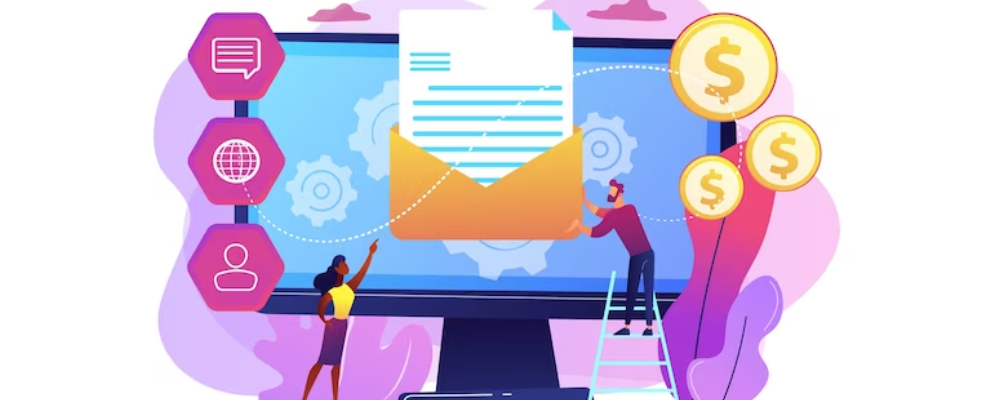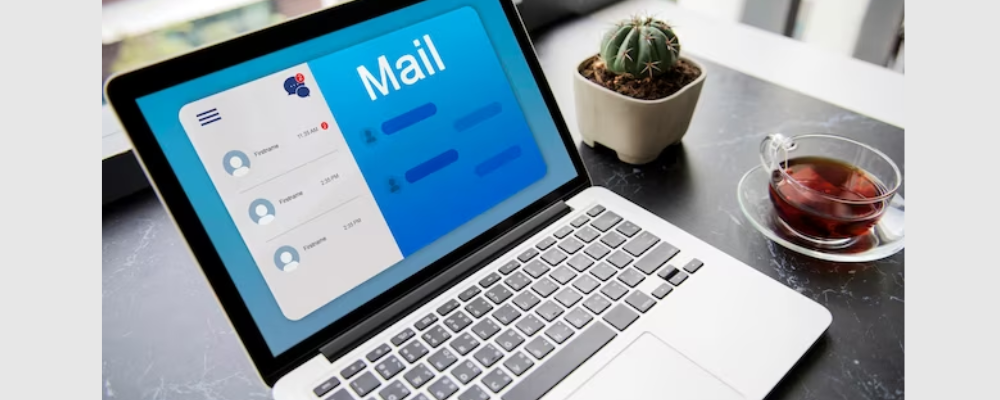Email remains a powerful tool for businesses seeking to connect with their audience in the fast-paced world of digital marketing. However, amidst the deluge of emails flooding inboxes daily, standing out and forging meaningful connections with leads has become increasingly challenging. This is where the art of email personalization emerges as a pivotal strategy, offering a tailored approach to engage prospects and nurture them into valuable conversions.
Email personalization transcends the traditional one-size-fits-all approach, instead embracing targeted and customized content that resonates with the recipient on a personal level. It goes beyond merely addressing a recipient by their first name; it encompasses a holistic understanding of their preferences, behaviors, and needs. This nuanced understanding enables marketers to craft compelling and relevant messages that capture attention, evoke interest, and drive action.
The primary goal of email personalization is not just to deliver information but to establish a genuine connection that fosters trust and loyalty. When executed effectively, personalized emails create a sense of exclusivity and relevance, prompting recipients to engage more deeply with the content and, ultimately, take desired actions, whether it’s making a purchase, signing up for a service, or further exploring what the business has to offer.
Understanding the Significance of Personalization in Lead Conversion
Email remains a cornerstone of digital marketing, and personalization is its backbone. It is impossible to overstate the importance of personalization in email marketing. It’s the catalyst that transforms mundane, mass emails into compelling, tailor-made messages that resonate with recipients on a profound level.
One-size-fits-all approaches are swiftly becoming obsolete. In contrast, personalized emails cater directly to the individual interests, preferences, and behaviors of recipients. This tailored approach significantly enhances the relevance and value of the communication, fostering a deeper connection between the brand and the recipient.
Personalization goes beyond mere token gestures, like addressing the recipient by name; it delves into crafting content that speaks directly to their needs, challenges, and aspirations. By leveraging data-driven insights, businesses can segment their audience, enabling the delivery of highly targeted content that aligns with specific demographics, behaviors, or purchase histories. This targeted messaging increases engagement, elevates open and click-through rates, and ultimately drives conversions.
Impact of Personalized Emails on Lead Generation
The impact of personalized emails on lead generation reverberates deeply within the realm of marketing. When recipients receive content that resonates personally, it sparks a connection that transcends mere information exchange. This connection prompts a heightened likelihood of engagement and desired actions. Amid the clutter of generic promotions flooding inboxes, personalized emails stand as beacons of relevance, capturing attention and stirring interest with their tailored approach.

Crafting content tailored to a recipient’s preferences or previous interactions is the cornerstone of personalized emails. This tailoring creates an aura of exclusivity and significance around the content. Notably, this approach not only elevates open rates but significantly boosts click-through rates and conversions. Studies, such as the one conducted by Experian, highlight this impact vividly—revealing that personalized promotional mailings enjoy a striking 29% higher unique open rate and an impressive 41% higher unique click rate compared to their non-personalized counterparts. These statistics underscore the tangible success that personalization brings to lead generation efforts.
Furthermore, personalized emails go beyond statistical successes; they lay the foundation for robust relationships between brands and recipients. These emails convey a distinct sense of care and understanding, instilling a feeling of trust and fostering unwavering loyalty. This aspect of relationship-building is paramount in the lead conversion journey, playing a pivotal role in nurturing prospects through the sales funnel. By cultivating this rapport, personalized emails become instrumental in transforming mere prospects into steadfast and loyal customers, solidifying the brand-consumer relationship for the long term.
Using Customer Data for Personalization
Effective personalization is intricately woven into the strategic utilization of customer data. It’s about navigating through diverse data sets that encompass a spectrum—from fundamental demographics to intricate purchase histories and nuanced online behaviors. Each piece of this data puzzle holds invaluable insights. The process starts with the meticulous collection of this data, culminating in a treasure trove of information that unveils the intricacies of audience preferences and tendencies.
Analyzing this wealth of data isn’t just a task; it’s the gateway to crafting personalized content that resonates deeply with specific audience segments. It’s about understanding that each segment is unique, each with its own preferences, quirks, and needs. This analysis, driven by customer relationship management (CRM) tools and sophisticated analytics platforms, isn’t just about sifting through numbers; it’s about decoding patterns and trends that pave the way for tailored content creation.
Segmentation emerges as a linchpin in this process—a strategic tool that allows marketers to slice the audience into distinct groups. It’s about going beyond seeing the audience as a monolith; it’s about recognizing the diversity within and catering to specific groups with precision. By segmenting based on demographics, preferences, behaviors, or levels of engagement, marketers set the stage for targeted campaigns that speak directly to the hearts of these subsets.
The utilization of segmentation isn’t merely a strategy; it’s the vehicle that transports relevant content to these specific groups, driving engagement and turbocharging conversion rates. However, the game isn’t static; it’s dynamic. Enter dynamic segmentation—fueled by the heartbeat of real-time data. This sophisticated technique isn’t confined to predefined segments; it’s adaptive, evolving alongside the audience’s changing behaviors. It ensures that communication remains not just targeted but timely, cementing the bond between the brand and its audience through personalized communication that speaks directly to their evolving needs and preferences.
Crafting Personalized Email Content for Lead Conversion
Subject lines serve as the gateway to engaging content. Tailoring them to resonate with recipients’ interests, pain points, or aspirations increases open rates. Personalization in subject lines, such as including the recipient’s name or referencing their preferences, grabs attention amidst crowded inboxes.

Compelling email content speaks directly to recipients, addressing their specific needs or interests. Utilizing personalized greetings, product recommendations based on past purchases, or exclusive offers creates a sense of relevance. Engaging storytelling or user-generated content further enhances the email’s appeal, prompting recipients to take action.
Dynamic content adapts to each recipient’s preferences or behaviors in real-time. By embedding elements like personalized product recommendations or location-specific offers, emails become highly relevant. Dynamic content also enables showcasing different content blocks based on the recipient’s interaction history, maximizing engagement and conversion potential.
Implementing Dynamic Personalization Techniques
Dynamic tags and custom fields are powerful tools for personalization. Dynamic tags, like recipient names or specific details, dynamically populate within the email content, creating a personalized touch. Custom fields enable the inclusion of diverse information, such as purchase history or preferences, tailoring the content to each recipient.
Behavioral triggers drive personalized interactions based on recipient actions. Tracking behaviors like website visits, email opens, or product views triggers automated responses. These triggers prompt targeted emails, delivering relevant content that aligns with the recipient’s actions, enhancing engagement and conversion opportunities.
Real-time content customization dynamically adapts email content based on real-time data. It allows for on-the-fly adjustments, showcasing live information like inventory levels, pricing updates, or event details. This dynamic approach ensures that recipients receive the most current and relevant information, fostering a sense of immediacy and relevance.
Testing and Optimizing Personalized Emails
A/B testing is pivotal for gauging the effectiveness of personalized elements within emails. It involves creating variations of emails with different personalized content, subject lines, or calls-to-action. By sending these variations to subsets of the audience and analyzing the performance metrics, marketers can identify which personalized elements resonate best with recipients, refining strategies for better engagement.
Metrics analysis is crucial in understanding the impact of personalized content on recipient behavior. Tracking metrics like open rates, click-through rates, conversion rates, and engagement levels provides insights into the effectiveness of personalization strategies. Analyzing these metrics guides refinements, allowing marketers to fine-tune future campaigns for higher performance.

Continuous improvement is key to optimizing personalized emails. Iteratively testing and refining personalized elements based on data-driven insights fosters ongoing enhancements. By implementing iterative changes, marketers can steadily improve the effectiveness of personalization, maximizing conversions and overall campaign success.
Strategies for Consistent Personalization Across Campaigns
Consistency within personalized emails stands as a linchpin for upholding and strengthening brand identity. It’s not just about tailoring content but ensuring that every communication aligns with the brand’s essence. Adhering meticulously to brand guidelines in personalized content goes beyond using the right logo; it’s about embodying the brand’s spirit. Consistent tones, visual elements, and messaging across emails ensure a seamless and unified brand experience for recipients. By integrating brand-specific colors, logos, and language into personalized emails, the brand not only maintains recognition but also reinforces its identity while delivering content finely tuned to the recipient’s preferences.
Achieving effective personalization requires a delicate balance between the efficiency of automation and the human touch. Automation undoubtedly streamlines processes, enabling scalability and consistency across campaigns. However, the essence of personalization lies in creating genuine connections. Combining automated personalization techniques—such as dynamic content or segmented campaigns—with thoughtful, personalized messaging is where the magic happens. It’s about infusing automation with empathy. This blend maintains efficiency while fostering authentic engagement. Striking this equilibrium results in personalized campaigns that not only feel tailored but also resonate on a human level, nurturing lasting connections with recipients.
Addressing Privacy and Transparency in Personalization
Respecting data privacy is paramount in personalized marketing. Obtaining explicit consent for data usage and clearly outlining how personal data will be utilized builds trust with subscribers. Implementing robust data security measures and complying with relevant data protection regulations, such as GDPR or CCPA, safeguards subscriber information. Providing opt-in/opt-out options empowers subscribers to control their data, fostering a transparent and trustworthy relationship.
Transparently communicating the benefits of personalization to subscribers is key. Highlighting how personalized content enhances their experience—by delivering relevant offers, tailored recommendations, or time-saving conveniences—encourages subscriber buy-in. Educating them about the value they gain from sharing their information builds trust and reinforces the idea that personalized content is aimed at improving their engagement rather than intrusive marketing tactics.
Conclusion
In the evolving realm of email personalization for lead conversion, the future is shaped by advanced technologies and a commitment to ethical practices. Tomorrow’s success hinges on embracing hyper-personalization, leveraging AI while upholding data privacy. Striking the balance between automation and human touch is key, fostering genuine connections. Crafting experiences that resonate and convert leads into loyal advocates remains pivotal. As marketers navigate this landscape, personalized emails will continue to drive successful strategies, shaping the future of effective engagement.




